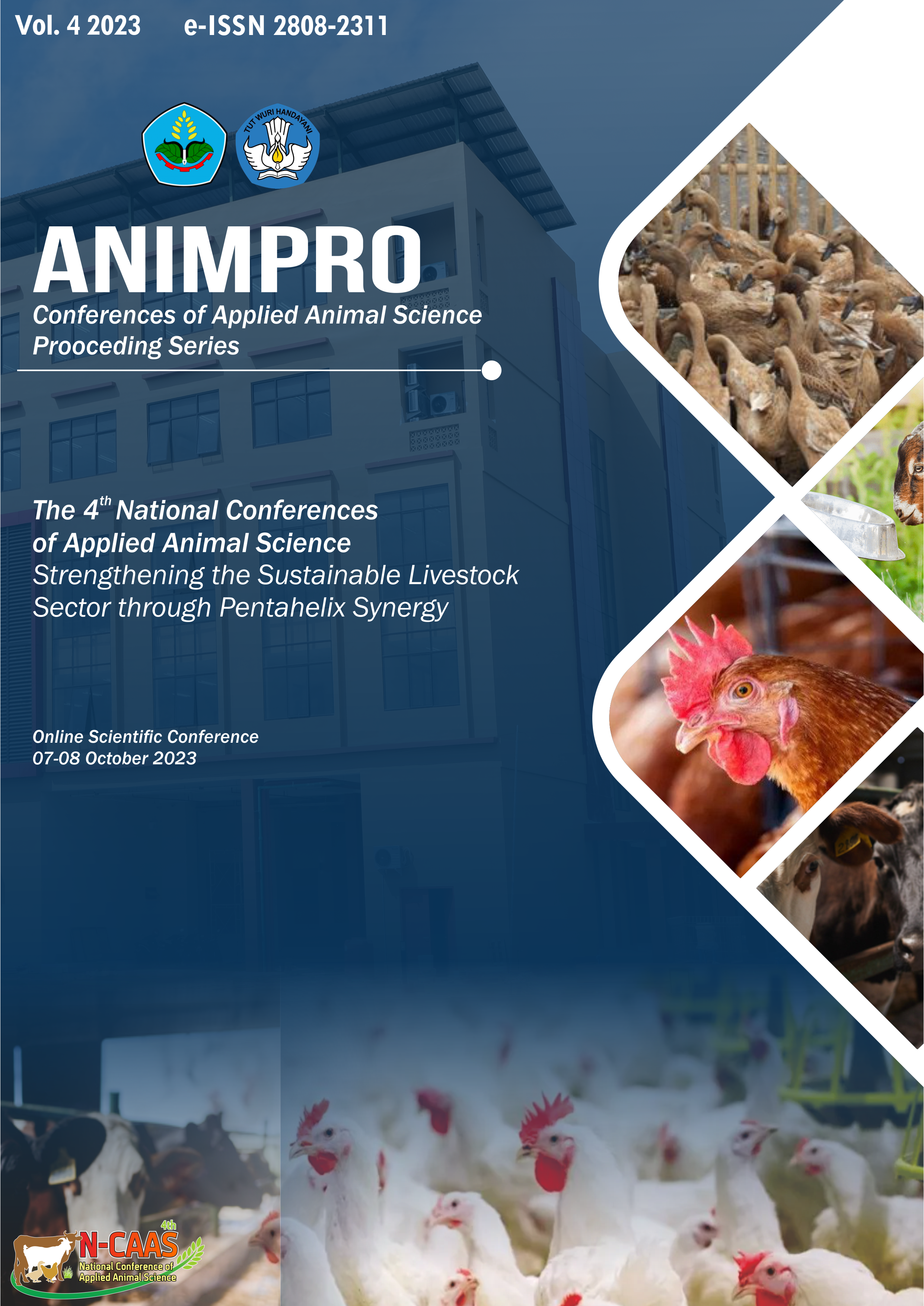Evaluasi penggunaan asam organik sebagai agen pickling dalam penyamakan krom kulit ikan pari
DOI:
https://doi.org/10.25047/animpro.2023.550Keywords:
organic acid, stingray skin, chrome tanning, picklingAbstract
The leather industry is a strategic industry capable of converting meat product waste in the form of leather into high-value materials such as shoes, jackets, wallets, and others. Tanning of stingray skin by chrome is interesting to explore, because stingray shell waste has not been widely used for leather. One of the important stages in tanning is pickling that using acid. This study aims to investigate the effects of a variety of different types of acids. Various acids used in the pkling process are formic acid, acetic acid, citric acid, and oxalic acid. The results of the tanning were tested for physical quality, including tests of tensile strength, elongation, softness, tear strength, sewing strength, and shrinkage temperature. The results were analyzed using the one way ANOVA method, and followed by the Duncan Multiple Range Test (DMRT) method. Based on the results of statistical analysis, it was found that stingray skin treated with formic acid had the best results in tensile strength and elongation tests, while the oxalic acid treatment had the best results in tests for softness, tear strength, sewing strength, and shrinkage temperature.Downloads
References
Abidin, M. Z., Yuliatmo, R., & Griyanitasari, G. (2022). Evaluation of physical properties of leather on the bating process by combination of papain enzyme with surfactant. Leather and Footwear Journal, 22(2), 101–106. Retrieved from https://doi.org/10.24264/lfj.22.2.3.
Badan Standarisasi Nasional. (1999). SNI 06-6121-1999 : Kulit Ikan Pari untuk Barang Kulit. Retrieved from Jakarta.
Covington, A. D., & Wise, W. R. (2020). Current trends in leather science, 0.
Karthikeyan, R, Chandra Babu, N. K., Mandal, A. B., & Sehgal, P. K. (2010). A new depigmentation and fiber opening method for the conversion of stingray skins into leathers. JALCA (Vol. 105).
Karthikeyan, Rajan, & Mandal, A. B. (2009). Soft leathers from himantura stingray skins Thermoluminescent dosimetry View project Leather and Leather Products from Chicken Leg Skins. View project. Journal of the Society of Leather Technologists and Chemists. Retrieved from https://www.researchgate.net/publication/287632082.
Kusmayanti, T., Ibrahim, R., & Riyadi, P. har. (2016). Pengaruh Perbedaan Bahan Penyamak terhadap Kualitas Kulit Ikan Pari Mondol (Himantura gerrardi) Tersamak.
Mendes, G. de O., Murta, H. M., Valadares, R. V., Silveira, W. B. da, Silva, I. R. da, & Costa, M. D. (2020). Oxalic acid is more efficient than sulfuric acid for rock phosphate solubilization. Minerals Engineering, 155. Retrieved from https://doi.org/10.1016/j.mineng.2020.106458.
Rosiati, N. M., & Udkhiyati, M. (2022). Citric acid as an effective and safe fixing agent in vegetable tanning process of goatskin. Leather and Footwear Journal, 22(4), 267–274. Retrieved from https://doi.org/10.24264/lfj.22.4.3.
Wibowo, R. L. M. S. A., Anggriyani, E., & Yuliatmo, R. (2018). The influence of sodium chloride replacement with potassium chloride as a curing agent on the quality of tanned pufferfish (Arothon reticularis) skin. Leather and Footwear Journal, 18(2), 101–108. Retrieved from https://doi.org/10.24264/lfj.18.2.4.
Downloads
Published
How to Cite
Issue
Section
License
Copyright (c) 2023 Tutik Maryati , Ragil Yuliatmo

This work is licensed under a Creative Commons Attribution 4.0 International License.









